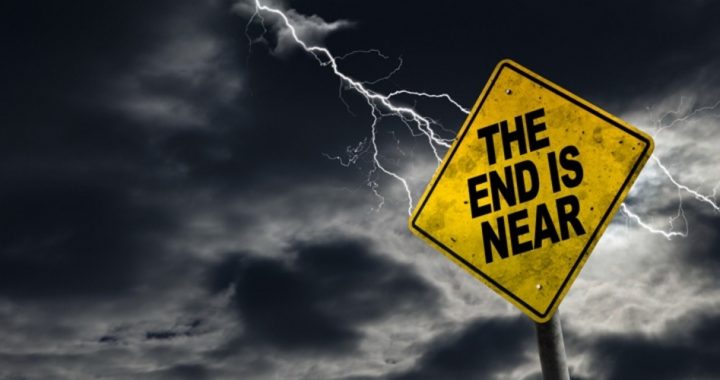
Podcast: Play in new window | Download ()
Subscribe: Android | RSS | More
Trepidatious teen Greta Thunberg has lot of company in her doom-and-gloom depression, according to a new survey. Conducted by ScottRasmussen.com, it found that 51 percent of under-35 voters believe it’s “somewhat likely” that man will be wiped out within 10 to 15 years. Only 12 percent of seniors agree, however, and there was an urban-rural divide as well, with city dwellers far more down on the future. Unsurprisingly, the doomsayers’ main fear appears to be “global warming.”
Overall, 29 percent of voters believe it’s somewhat likely that man will become history within 10 to 15 years, with 71 percent considering it unlikely, 37 percent not likely at all, and 10 percent very likely (close to the same percentage using antidepressants!). The latter number drops to four percent among seniors, however.
It isn’t surprising that the elders are the least concerned. Not only haven’t they been as intensely indoctrinated as the young have with climate-change propaganda, but experience often tells them that every generation has its “Repent! The end is nigh!” fears.
In fact, “In the early days of the Cold War, many young people had similar concerns that the world would be destroyed by nuclear weapons,” ScottRasmussen.com reminds us. “Another generation was convinced that overpopulation would devastate the human race by the 1980s.”
Moreover, people in the distant past had even greater reason to fear the end. Just consider the Middle Ages, when the Black Plague — whose cause was a frightening mystery at the time — wiped out whole towns and approximately a third of Europe’s population. Yet man survived.
As for today’s fears and the geographical divide, 45 percent of city folks think man may meet his end due to climate change within 10 to 15 years. But this sentiment is shared by only 23 percent of rural voters and 22 percent of suburban voters.
Moreover, “Twenty-one percent (21%) of urban voters consider it Very Likely the earth will quickly become uninhabitable,” writes ScottRasmussen.com. “Just 6% of rural voters and 5% of suburban voters consider that a Very Likely outcome.”
This geographical chasm is hardly unfathomable. While living in a concrete jungle certainly may have psychological effects that could contribute to gloomy outlooks, the main difference would be that city dwellers are mostly liberal while rural/suburban voters are, overall, more conservative. And leftists are far more likely than rightists to subscribe to global-warming alarmism.
Of course, though unlikely, the world could end within 15 years, but nuclear Armageddon would be the probable cause if it did. Then there are lesser-known threats such as killer asteroids, rogue planets, roving black holes, and gamma ray bursts to keep the world’s Gretas up at night.
As for man-authored, long-term threats, the late physicist Stephen Hawking and others have warned about artificial intelligence. There’s also the darker side (and some say fanciful one) of nanotechnology, and then there’s the unknown — which we most have to fear but don’t because it is unknown.
Think about it: Did the majority foresee the sacking of Rome in 410 A.D., its fall later that century, the Black Plague’s onset, WWI, WWII, or the Great Depression? The point is that there’s one kind of disaster we never have to worry about:
The one everyone else is worried about.
And there’s not the remotest chance that man will be wiped out by “climate change,” nature- or man-caused, within the next 15 years. The idea is preposterous.
The problem is that false prophets of doom — such as Alexandria Ocasio-Cortez (D-N.Y.), who predicted disaster in 12 years (unless we submit to her side’s complete control) — have been filling tender minds with end-of-the-world propaganda. Yet these young people would feel better if they understood the doomsayers’ actual track record.
For example, Breitbart’s John Nolte just reported that “Climate Alarmists in the scientific community and environmental movement” are 0 for 41 in their predictions of “imminent disaster.” Nolte asks rhetorically about this, echoing my stock broker analogy, “If you had an investment counselor who steered you wrong 41 times, would you hang in there for number 42?”
Then in “Environmentalists’ Wild Predictions,” Professor Walter E. Williams points to a 1969 warning of an impending ice age; and a 1968 prediction of massive starvation, by Professor Paul Ehrlich, holding that the United States’ population would have dropped to 22.6 million by 1999. Ehrlich also claimed there was a good chance that England would not even exist in the year 2000.
Then there was the 1894 London Times prediction that by 1945, London would be buried under nine feet of horse manure — because, of course, the population would explode and everyone would be riding horses!
These silly prognostication errors are made because even when the prophets are sincere (and they often have ulterior motives), all they do is “project the present into the future,” as late author Michael Crichton once put it. They can’t know the unknown.
Here’s what we can know, however: 99.9 percent of the species that have ever existed are now extinct, and it appears that most of the five great extinctions were caused by cold weather, not warmer weather.
In fact, citing a Lancet study, even the New York Times admitted in 2016 that “cold weather is responsible, directly or indirectly, for 17 times as many deaths as hot weather.” Moreover, the paper cited yet another study suggesting that in most of the world, “rising temperatures could reduce overall mortality rates.” And since many experts believe we do face an impending ice age (naturally occurring), this should be a greater cause for alarm.
As for man being wiped out in 15 years by “global warming,” let’s get real. It’s about as likely as being buried under nine feet of horse manure.
Image: ronniechua via iStock / Getty Images Plus
Related article:


